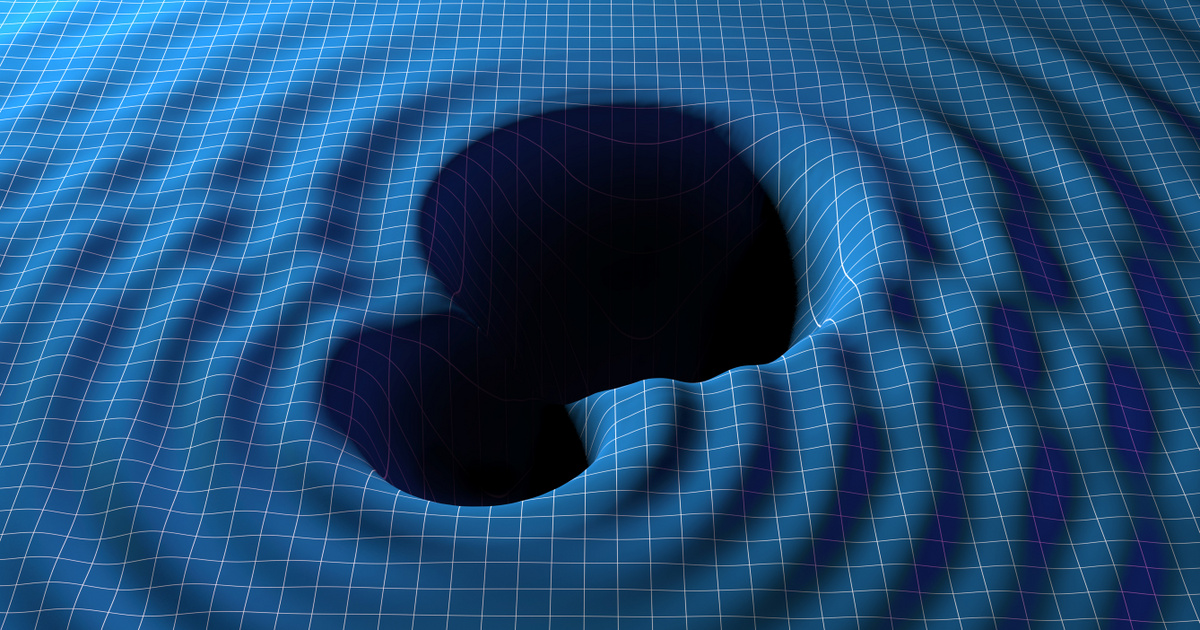The LVK Gravitational Observatory System detected a particularly rare cosmic collision last May. One of the participants in the meeting was a neutron star, and we do not know what the other one was. All we know is that its mass lies among the possible solutions.
Gravitational waves were predicted by the theory of general relativity, implying a wave-like change in the curvature of space-time caused by the acceleration of masses. Since 2015, we have been able to detect them through very small variations in the arrival time of very sensitive laser pulses.
Gravitational waves as we know them today arise from the collision of very dense and compact celestial bodies. There are two possible types: neutron star and black hole.
Neutron stars form when giant stars collapse at the end of their lives. When fusion fuel runs out, so does energy, and a lot of material falls into the star's core, where it flies away in a supernova explosion. After the explosion, what remains is an ultra-dense stellar core, which can be at most two and a half times the mass of the Sun, but in a sphere 20 kilometers in diameter. It's really compact,
Here, a matchbox-sized substance weighs 3 billion tons.
A black hole is a well-known celestial body with very strong gravity, and its escape speed exceeds the speed of light, meaning that light does not escape, and many other strange things happen to space, time, and the laws of physics. Black holes can vary in size from a tenth of a millimeter to supermassive black holes fifty billion kilometers in diameter.
The upper limit on the mass of neutron stars is 2.2-2.5 solar masses and the smallest known black hole is 5 solar masses.
During the analysis of data recorded by the Ligo, Virgo and Kagra gravitational wave observatories in May 2023, the event was identified, which was given the signal GW230529. The usual choreography for such events is that two merging celestial bodies approach each other and orbit each other at increasing speed until they finally collide.
Calculations showed that one of the participants in the GW230529 merger, which occurred 650 million light-years away from us, was a celestial body with a mass of 1.2 and 2 solar masses, clearly a neutron star. The other participant's mass was between 2.5 and 4.5 solar masses, which is quite odd in the gap between possible masses.
According to astronomers, what they discovered may be a very rare and very small black hole. The reason for the surprising result is that we have been able to observe gravitational waves for barely a decade, and before that we deduced the properties of such celestial bodies from electromagnetic properties – the concept of a gap between masses dates back to the turn of the 20th century. Millennium, but we can already see that this area is not as empty as we thought.
Like neutron stars, black holes form from stellar explosions. However, the newly discovered superluminous black hole does not fit the model of stellar evolution. According to Evan Goetz of LIGO, one possible explanation is that it is a black hole
can be created indirectly,
From a large neutron star.
The massive celestial body falling into the gap was first detected in 2020 using a gravitational wave detector – and its exact location could not be measured at the time, because only one member of the detector system was working. the In the case of GW230529, observations using other methods could help solve the mystery.
The LIGO, Virgo, and CAGR observatories have undergone significant technical development in recent years, dramatically increasing the sensitivity of their detectors. After a short maintenance period, scientific work will begin again in April this year. If all goes well, the number of observed gravitational waves could reach two hundred by next February.
(Sciences, Science Alert, Space.com website)














































